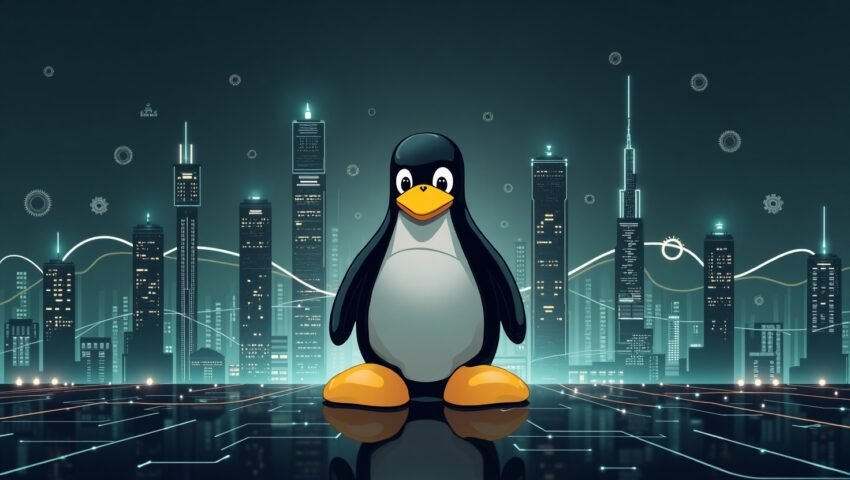Ubuntu Linux: If you’ve ever dipped your toes into the vast ocean of Linux, chances are you’ve heard of Ubuntu. It’s the friendly face of open-source software, a distribution (or “distro”) that’s won hearts worldwide with its accessibility, power, and community spirit. Whether you’re fleeing Windows, curious about Linux, or just craving something fresh, Ubuntu Linux might be your perfect starting point. In this blog, we’ll unpack what makes Ubuntu special, how to get it running, and why it’s worth a spin.

What Is Ubuntu?
Ubuntu is a Linux distribution built on the rock-solid foundation of Debian, one of the oldest and most respected distros. Launched in 2004 by Canonical, a UK-based company founded by South African entrepreneur Mark Shuttleworth, Ubuntu aimed to make Linux approachable for everyone—not just tech wizards. Its name comes from a Zulu and Xhosa word meaning “humanity” or “I am because we are,” reflecting its community-driven ethos.
Today, Ubuntu is one of the most popular Linux distros, powering everything from personal laptops to cloud servers and even parts of the International Space Station. It’s free, open-source, and endlessly customizable.
Why Ubuntu Stands Out
What sets Ubuntu apart in the crowded Linux landscape? Here’s the rundown:
- User-Friendly: With its GNOME desktop (since version 17.10), Ubuntu feels modern and intuitive, even for newcomers.
- Regular Updates: Canonical releases a new version every six months (e.g., 24.04, 24.10), plus Long-Term Support (LTS) editions every two years with five years of updates—perfect for stability lovers (like 22.04 LTS, current as of March 2025).
- Software Galore: The Ubuntu Software Center and APT package manager make installing apps (like Firefox, VLC, or LibreOffice) a breeze.
- Community & Support: A massive user base means tons of forums, tutorials, and docs—like Ask Ubuntu—to guide you.
- Versatility: From desktops to servers, IoT devices to cloud instances, Ubuntu scales effortlessly.
Getting Started: Installing Ubuntu
Ready to give Ubuntu a try? Here’s a simple guide to installing it on your computer. (Note: As of March 15, 2025, the latest LTS is likely 24.04, but check ubuntu.com for the newest release.)
What You’ll Need
- A PC with at least 4GB RAM (8GB recommended) and 20GB free disk space.
- A USB drive (4GB+) or DVD.
- The Ubuntu ISO file from ubuntu.com/download.
Steps to Install
- Download Ubuntu: Grab the ISO from the official site.
- Make a Bootable USB: Use tools like Rufus (Windows), Etcher (cross-platform), or Ubuntu’s Startup Disk Creator to flash the ISO onto your USB.
- Backup First: Save any important files—better safe than sorry!
- Boot from USB: Restart your PC, enter the BIOS/UEFI (press F2, F12, or Del at startup), and set the USB as the first boot device.
- Try or Install: Ubuntu’s boot screen lets you “Try Ubuntu” (test without changes) or “Install Ubuntu.” Pick “Install.”
- Setup Basics: Choose your language, keyboard layout, and whether to download updates during installation.
- Partitioning: Opt for “Erase disk and install Ubuntu” (full replacement) or “Install alongside” (dual-boot with Windows). Newbies should pick the latter if keeping their old OS.
- Finish Up: Set your time zone, create a username/password, and let it install (10-20 minutes). Restart when prompted, remove the USB, and log in!
Boom—you’re running Ubuntu!
What to Expect
Once you’re in, you’ll greet GNOME—a clean, tiled desktop with a dock and app menu. Out of the box, you get Firefox, Thunderbird (email), and LibreOffice (think Microsoft Office, but free). Want more? Hit the Software Center or use the terminal (e.g., sudo apt install gimp for photo editing).
Ubuntu’s not just pretty—it’s practical. Developers love its support for Python, Docker, and cloud tools. Gamers can tap Steam with a few tweaks. And if you hit a snag, the community’s got your back.
Flavors of Ubuntu
Canonical offers official “flavors” with different desktop environments:
- Kubuntu: KDE Plasma for a flashy, customizable look.
- Lubuntu: LXQt for lightweight speed on old hardware.
- Ubuntu MATE: Retro vibes with the MATE desktop.
- Ubuntu Budgie: Sleek and modern with the Budgie desktop.
Pick one that suits your style—all share Ubuntu’s core strengths.
Who’s Ubuntu For?
- Beginners: Its ease makes it a Linux launchpad.
- Switchers: Windows/macOS users will feel at home.
- Professionals: Developers, IT folks, and server admins swear by it.
- Tinkerers: Customization options abound.
Not sold? Boot it live from USB—no install required—to test the waters.
Final Thoughts
Ubuntu Linux is more than an OS—it’s an invitation to explore open-source freedom. It blends simplicity with power, making it a gateway for millions into the Linux world. Whether you’re ditching pricey software, reviving an old PC, or just geeking out, Ubuntu delivers. So why not download it today and see what “humanity” in tech feels like?
Have you tried Ubuntu? What’s your take? Share your thoughts below—I’d love to hear!
Ubuntu Linux: Your Gateway to the World of Open-Source – https://linuxhowto.org
